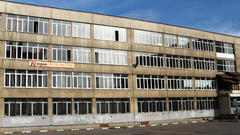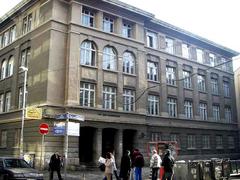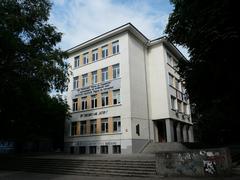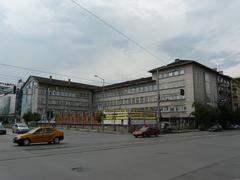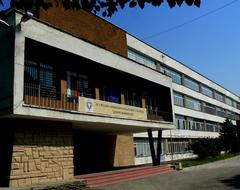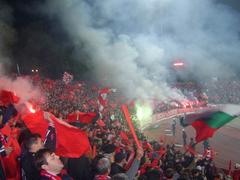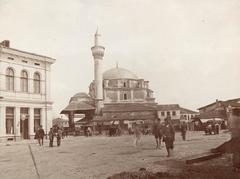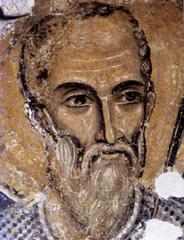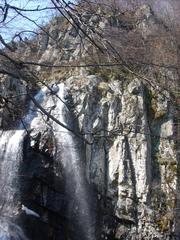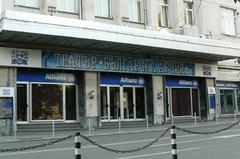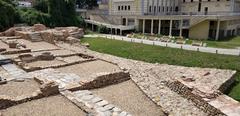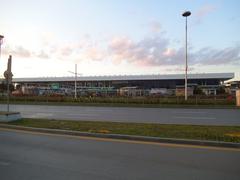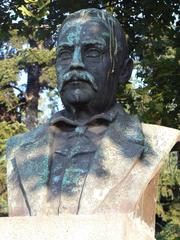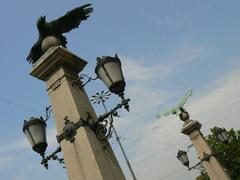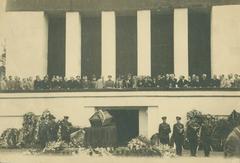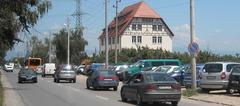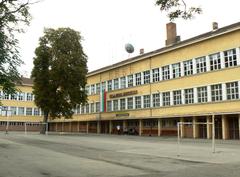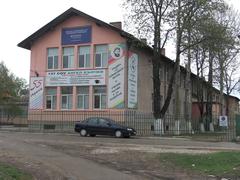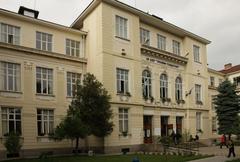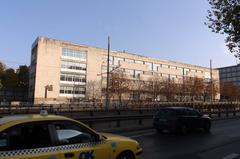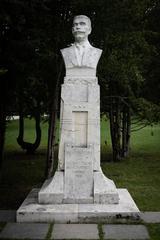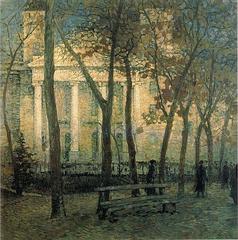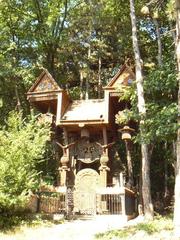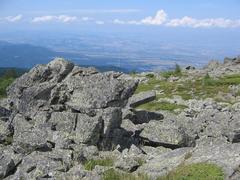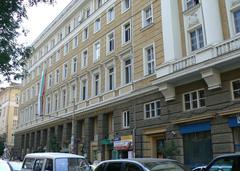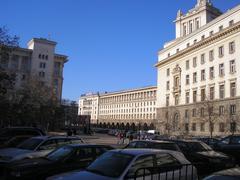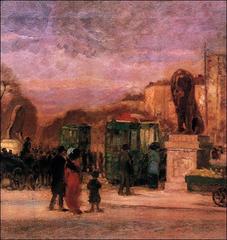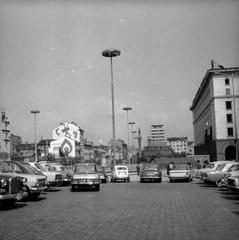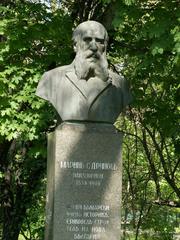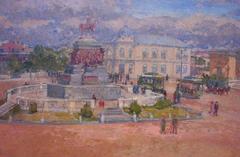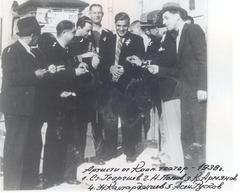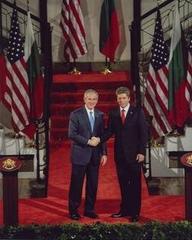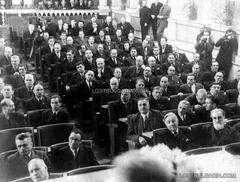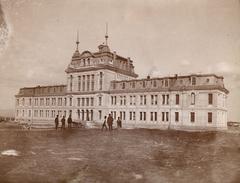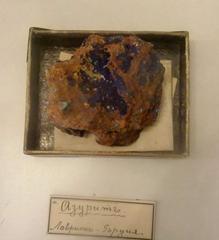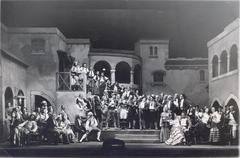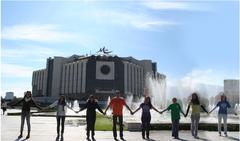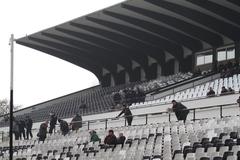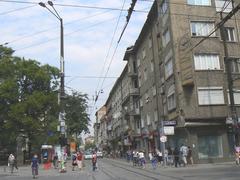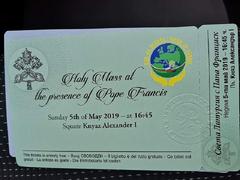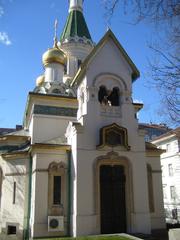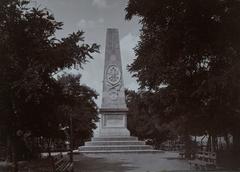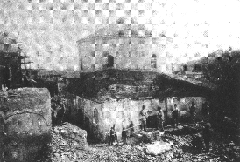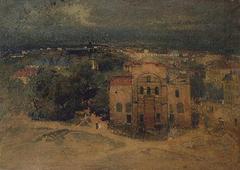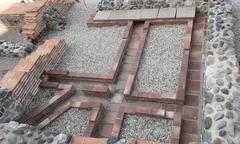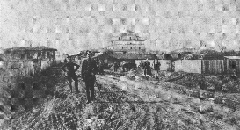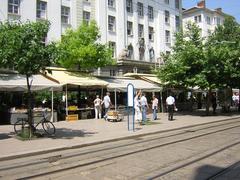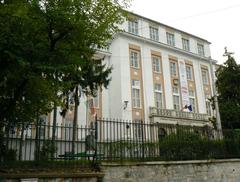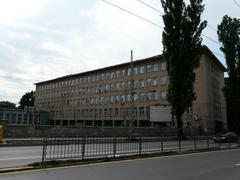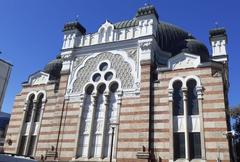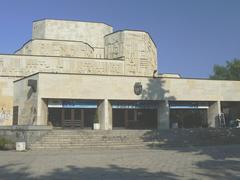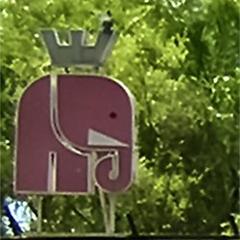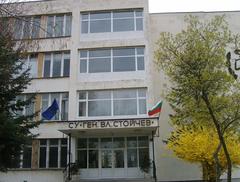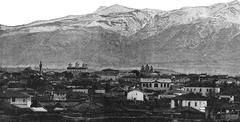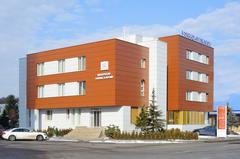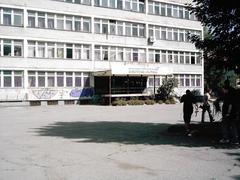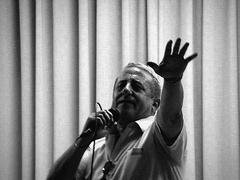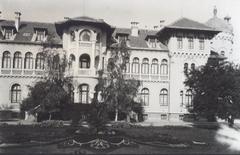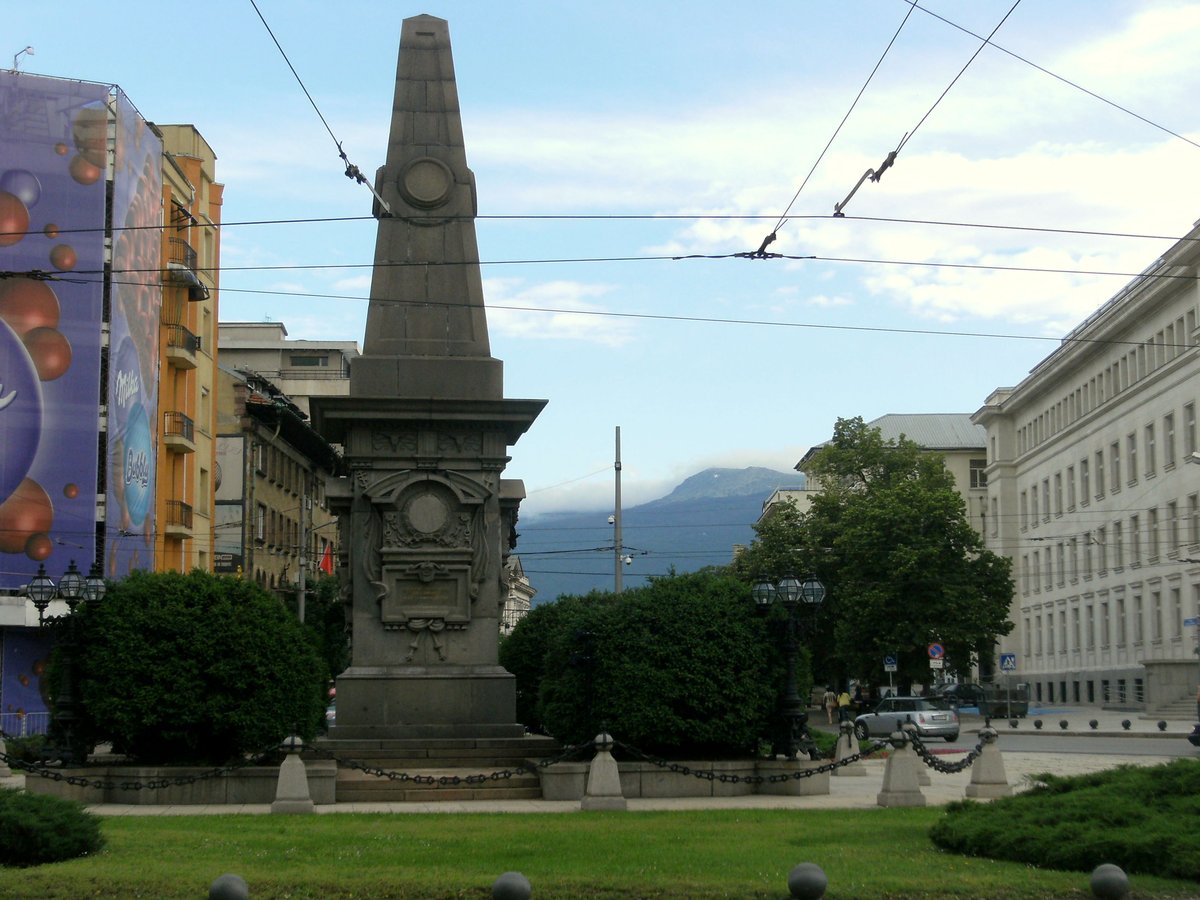
Comprehensive Guide to Visiting Pametnik na Vasil Levski, Sofia, Bulgaria
Date: 19/07/2024
Introduction
The Monument to Vasil Levski, known as the Паметник на Васил Левски, is one of Sofia’s most revered historical landmarks. Erected to honor Vasil Levski, a prominent figure in Bulgaria’s struggle for independence from the Ottoman Empire, the monument serves as a powerful symbol of national pride and the enduring fight for freedom. Located at the intersection of Vasil Levski Boulevard and Yanko Sakazov Boulevard, this iconic site is not only a testament to Levski’s revolutionary spirit but also an architectural marvel designed by Czech architect Antonín Kolář and sculptor Marin Vasilev (Sofia Municipality).
The historical significance of Vasil Levski, often referred to as the Apostle of Freedom, cannot be overstated. Born in 1837, Levski’s vision for an independent and democratic Bulgaria laid the groundwork for the national liberation movement. His capture and execution in 1873 galvanized the Bulgarian people, ultimately leading to the nation’s liberation in 1878. The monument, unveiled in 1895, stands as a poignant reminder of his sacrifices and unwavering commitment to the cause of freedom (National Museum of Military History).
Visitors to the monument can expect to be immersed in the rich cultural and historical tapestry of Bulgaria. The site is not only a focal point for national celebrations and commemorations but also an educational resource for those wishing to learn more about Bulgaria’s path to independence. With no admission fee and accessibility year-round, the Monument to Vasil Levski is an essential stop for anyone exploring Sofia’s historical and cultural landscape.
Table of Contents
- [Historical Background](#historical-backgroundhistorical-background)
- [Origins and Construction](#origins-and-constructionorigins-and-construction)
- [Architectural Features](#architectural-featuresarchitectural-features)
- [Historical Significance](#historical-significancehistorical-significance)
- [Visitor Information](#visitor-informationvisitor-information)
- [Visiting Hours and Tickets](#visiting-hours-and-ticketsvisiting-hours-and-tickets)
- [How to Get There](#how-to-get-therehow-to-get-there)
- [Best Times to Visit](#best-times-to-visitbest-times-to-visit)
- [Accessibility](#accessibilityaccessibility)
- [Special Events and Photographic Spots](#special-events-and-photographic-spotsspecial-events-and-photographic-spots)
- [Preservation and Restoration](#preservation-and-restorationpreservation-and-restoration)
- [Visitor Experience](#visitor-experiencevisitor-experience)
- [FAQs](#faqsfaqs)
- [Conclusion](#conclusionconclusion)
- [References](#referencesreferences)
Historical Background
Origins and Construction
The Паметник на Васил Левски (Monument to Vasil Levski) in Sofia, Bulgaria, stands as a significant symbol of Bulgarian national pride and resistance. The monument was erected to honor Vasil Levski, a revolutionary leader who played a pivotal role in the Bulgarian struggle for independence from Ottoman rule. The idea for the monument was conceived shortly after Bulgaria’s liberation in 1878, reflecting the nation’s desire to commemorate its heroes and solidify its newfound national identity.
The construction of the monument began in 1891 and was completed in 1895. The design was the result of a national competition, which was won by the Czech architect Antonín Kolář and the sculptor Marin Vasilev. The monument is strategically located at the intersection of Vasil Levski Boulevard and Yanko Sakazov Boulevard, a site chosen for its prominence and accessibility within the capital city.
Architectural Features
The monument features a bronze bust of Vasil Levski mounted on a tall stone pedestal. The pedestal is adorned with intricate carvings and inscriptions that highlight Levski’s contributions to the Bulgarian liberation movement. The bust itself is a masterful representation of Levski, capturing his determined expression and resolute spirit. The monument stands at a height of approximately 13 meters, making it a towering presence in the area.
One of the notable architectural elements is the use of local materials, which not only ensured the monument’s durability but also symbolized the connection between Levski and the Bulgarian land. The base of the monument is surrounded by a low fence, and the area is landscaped with greenery, providing a serene environment for reflection and commemoration.
Historical Significance
Vasil Levski, born Vasil Ivanov Kunchev in 1837, is often referred to as the Apostle of Freedom. He was a key figure in the Bulgarian national revival and the fight against Ottoman oppression. Levski’s vision for an independent Bulgaria was rooted in the principles of equality, justice, and democratic governance. He established a network of revolutionary committees across the country, which played a crucial role in organizing and mobilizing the Bulgarian population against the Ottoman Empire.
Levski’s capture and subsequent execution by the Ottomans in 1873 marked a tragic yet pivotal moment in Bulgarian history. His martyrdom galvanized the Bulgarian people and intensified their resolve to achieve independence. The monument to Vasil Levski serves as a powerful reminder of his sacrifice and the enduring legacy of his ideals.
Visitor Information
Visiting Hours and Tickets
The Паметник на Васил Левски is open to the public year-round, and there is no admission fee. While the monument itself does not have specific visiting hours, it is recommended to visit during daylight hours for the best experience. There are no tickets required to visit the monument.
How to Get There
The monument is easily accessible by public transportation. Several bus and tram lines stop nearby, including lines 9, 72, 75, and 213. For visitors using the metro, the nearest station is the Sofia University St. Kliment Ohridski, which is a short walk from the monument.
Best Times to Visit
The monument is particularly striking during national holidays and commemorative events, such as Levski’s birth and death anniversaries, when it is adorned with flowers and wreaths. These occasions provide a unique opportunity to witness the deep respect and admiration that Bulgarians have for Vasil Levski and to participate in the collective memory of the nation’s struggle for freedom. The best times to visit are during the spring and summer months when the weather is pleasant and the surrounding greenery is in full bloom.
Accessibility
The Паметник на Васил Левски is accessible to disabled visitors. The area around the monument is relatively flat and well-maintained, making it easy to navigate for those with mobility challenges.
Special Events and Photographic Spots
Throughout the year, the monument serves as a venue for various political gatherings, commemorations, and protests. During the communist era, the monument was used to promote socialist ideals, with Levski being portrayed as a precursor to communist revolutionaries. In the post-communist period, the monument has continued to be a focal point for national celebrations and public discourse on Bulgaria’s historical and cultural identity.
For photography enthusiasts, the best spots to capture the monument are from the corners of Vasil Levski Boulevard and Yanko Sakazov Boulevard, where the monument stands prominently against the backdrop of Sofia’s urban landscape.
Preservation and Restoration
Over the years, the monument has undergone several restoration efforts to preserve its structural integrity and aesthetic appeal. The most recent restoration took place in 2017, coinciding with the 180th anniversary of Levski’s birth. This restoration project involved cleaning the bronze bust, repairing the stone pedestal, and enhancing the surrounding landscape. The project was funded by the Bulgarian government and various cultural organizations, reflecting the continued importance of the monument in Bulgarian society.
Visitor Experience
For visitors to Sofia, the Паметник на Васил Левски is a must-see landmark. The site is open to the public year-round, and there is no admission fee. Visitors are encouraged to spend time exploring the monument and its surroundings, which include other historical sites and cultural attractions.
FAQs
Q: What are the visiting hours for the Паметник на Васил Левски? A: The monument is open to the public year-round, with no specific visiting hours. It is recommended to visit during daylight hours.
Q: Do I need tickets to visit the monument? A: No, there are no tickets required to visit the monument.
Q: How can I get to the monument? A: The monument is easily accessible by public transportation, with several bus and tram lines stopping nearby. The nearest metro station is Sofia University St. Kliment Ohridski.
Q: Is the monument accessible to disabled visitors? A: Yes, the area around the monument is relatively flat and well-maintained, making it accessible to disabled visitors.
Q: When is the best time to visit the monument? A: The best times to visit are during the spring and summer months and during national holidays and commemorative events.
Conclusion
In conclusion, visiting the Monument to Vasil Levski in Sofia offers a profound and enriching experience, providing a deep connection to Bulgaria’s historical and cultural heritage. The monument stands as a testament to the enduring legacy of Vasil Levski and the relentless quest for freedom and justice that he championed. From its strategic location in the heart of Sofia to its intricate architectural details, the monument encapsulates the spirit of Bulgarian national pride and resistance.
Whether you visit during a national holiday to witness the collective reverence for Levski or choose a quieter time to reflect on the monument’s significance, the experience is bound to be memorable and educational. The surrounding area, rich with other historical sites and cultural attractions, further enhances the visit, making it a comprehensive journey through Sofia’s past and present. For those planning a visit, practical information such as accessibility, nearby attractions, and best visiting times ensure a smooth and enjoyable experience (Sofia University, National Library).
Ultimately, the Monument to Vasil Levski is more than just a landmark; it is a symbol of the values that continue to shape Bulgaria’s identity. By preserving and honoring this site, both locals and visitors alike contribute to the ongoing celebration of Bulgaria’s rich history and cultural legacy. For more detailed information and travel tips, the Sofia Municipality website and the Audiala mobile app serve as excellent resources.

